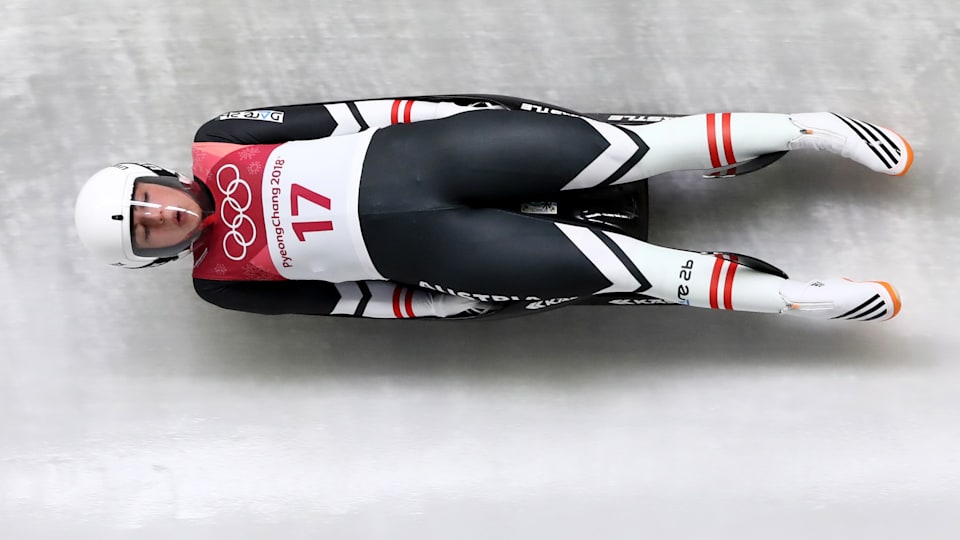What is luge?
Luge is the fastest sport in the Winter Olympics, where athletes ride a flat sled through a course face up and feet first.

Most of India’s association with the Winter Olympics has been with the sport of luge.
Veteran Shiva Keshavan represented India in five Winter Olympic Games - from 1998 to 2018 - in luge and had a best finish of 25th in the 2006 edition in Turin, Italy.
Luge has been part of the Winter Olympics programme since 1964 and will feature at the Beijing 2022 Winter Olympics as well.
So, how does luge work?
In simple terms, luge is a timing-based race in which an athlete lies down face up on a sled and slides at incredible speeds through a predefined course.
The luger with the fastest cumulative time is deemed the winner.
Luge has four categories - men’s singles, women’s singles, doubles and team relay. There is no specific rule stating that athletes of the same gender must compete in the doubles.
Luge rules
Luge is often considered the fastest sport at the Winter Olympics, with lugers hitting top speeds of more than 130km/h.
Athletes are required to lay in the supine position - face up and feet first - on a sled and have to slide down a course, which has small turns, as fast as possible.
Flat on their backs, lugers steer the sled and change direction by shifting weight with the help of their calf muscles and use their shoulders to slide around.
At the Olympic sliding centre in Beijing, the men’s singles course is 0.84 miles (approximately 1352 metres) while the women’s singles and doubles course is 0.75 miles (approximately 1207 metres) long.
A luger must slide past the finish line on the sled for the run to be counted. Finishing without the sled or walking or pushing the sled towards the finish will lead to disqualification.
At the Winter Olympics, lugers have to make four runs down the course (in singles) and two runs (in doubles) and the athlete/pair with the fastest total time is declared the winner.
A singles luge event takes place over two days - with two runs on each day. In most other tournaments (like the World Championships), singles competitors are only required to make two runs.
In a luge team relay, teams have three sleds - one men’s singles, one women’s singles and one doubles.
In the team relay, the women’s singles competitor goes first and on reaching the finish, touches a touchpad, which opens the gate for the men’s singles competitor.
The men’s singles competitor hits the touchpad to open the gate for the doubles pair. The top driver of the doubles team hits the touchpad to signal the finishing run for the team and to stop the timer, determining the total overall time for that team.
Luge equipment
The most important equipment for luge is the sled. A sled slides on the two steel pieces, with the extended curved parts at the end called the runners - which help the luger change direction with their legs. The seat on which the luger lies on the sled is called the ‘pod seat’.
A singles sled has to weigh between 21-25kg while a doubles sled can weigh between 25-30kg.
The maximum width for a singles sled is 550mm and the maximum height is 120mm.
The racing shoe for lugers is called booties. Athletes must wear a helmet and face shield - for protection against cold temperatures and accidents - with a neck strap to hold their heads against high G-forces.
Lugers wear racing gloves made of leather and a skin-tight race suit, which reduces drag (wind resistance). They also sport spikes on their gloves, which helps them grip the ice and generate momentum to take the sled forward in the initial movement.
Luge history
Luge was introduced at the 1964 Winter Olympics in Innsbruck, Austria with the men’s singles, women’s singles and doubles events. The team relay was added to the Olympic programme in 2014.
Germany’s Thomas Kohler was the first men’s singles luge Olympic gold-medallist while compatriot Ortrun Enderlein won the women’s singles gold.
Austrian pair Josef Feistmantl and Manfred Stengl were the inaugural luge doubles Olympic winners.
Germany have dominated luge at the Winter Olympics, winning 43 medals overall - 22 gold, 12 silver and nine bronze medals.
In the men’s singles, West Germany, East Germany and unified Germany have combined to win 11 golds, seven silvers and seven bronze to lead the table.
Germany also lead the way in women’s singles, having combined to win 12 golds, 14 silvers and nine bronze medals. In the doubles, they have 11 golds, four silvers and seven bronze medals.
Germany have also won the luge team relay golds at the 2014, 2018 and 2022 Winter Olympics.
